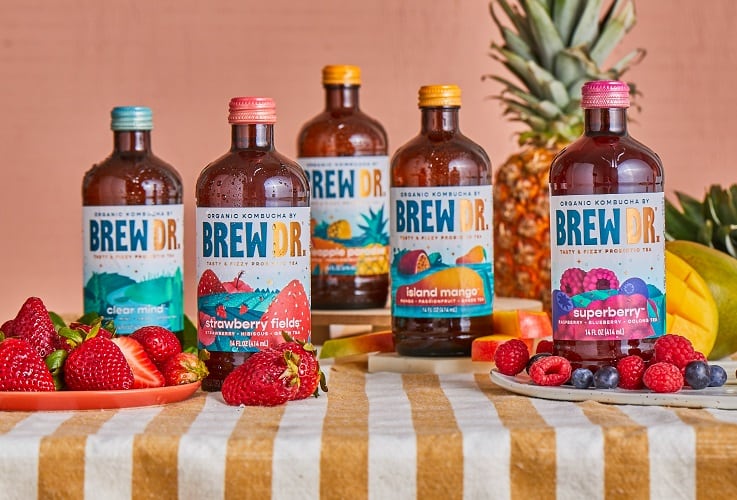According to market research, both the global prebiotic and probiotic ingredient markets are projected to grow in the low double- and high single-digits over the next five years with ResearchandMarket predicting the global prebiotics market will grow at a compound annual growth rate of 11.3% to $12.79b by 2030 and Allied Market Research projecting the global probiotics market will grow at a CAGR of 8.6% to $73.9b in the same time.
Demand for both are driven primarily by an increased awareness of the connection between a healthy microbiome and a healthy digestive system, as illustrated by a 267% increase in Google searches for ‘microbiome’ from 2014 to 2019.
Probiotic supplier Ganeden also points to consumer research from FMCG Gurus that shows 40% of global consumers are actively interested in improving their digestive health and Mintel research that shows 67% of US consumers who use probiotic supplements do so to support a healthy gut or microbiome.
But this is just the tip of the iceberg, according to Will Rowe, co-founder, president and CEO of Nutrasource, a full-service contract research organization with expertise in pro-, pre- and postbiotics.
Beyond the gut: Probiotics’ potential benefits across biomes
He says he sees significant untapped market potential for pro- and prebiotics beyond digestive health and working in concert together and with other ingredients for enhanced performance.
“When you look at prebiotics and probiotics working together, or synbiotics if you will … that is a pretty open space. There has been a lot of work historically in probiotics and there continues to be innovation around probiotic products and formulas, but how they work synergistically with other ingredients, categories and other ingredient types to enhance their performance … that is an area that still has so much work to be done in terms of what can be done and the focus and how it helps,” he said.
He also says how changes in the gut microbiome by pro- and prebiotics translate to actual health outcomes will be important for the future of research and product innovation.
“When we say, ‘Hey, if you eat this probiotic … it changes your gut flora.’ Okay, great, but regulators don’t really put much stock in that from the standpoint of claims. So, the next point is, how does that change in the gut microflora translate to health outcomes for a pre-diabetic or cardiovascular patient? What are the markers that regulators and healthcare practitioners care about? How does that lead to changes in the gut flora or gut microbiome,” he said.
He noted particular interest in how changes in the gut microbiome could impact insulin, glucose, cholesterol, weight, inflammation and other common health conditions associated with diet.
“There is still a ton of green space there. So, that to me is kind of the next generation of research for probiotics and prebiotics,” he said.
Is third-party data enough to support probiotic health claims?
As stakeholders research new applications and potential benefits of probiotics and prebiotics, Rowe says they should prepare to share that data not just with regulators and the scientific community but consumers, too.
He explained that as consumers become more sophisticated and familiar with specific strains of probiotics and the benefits they convey, they will no longer be satisfied with generic claims of “contains probiotics” or “with prebiotics.”
“What is often done in our industry is [manufacturers] borrow science from the third party literature, but there are increasingly companies are doing product specific data generation and actually studying their own product,” and consumers are coming to look for and expect that level of rigor, Rowe said.
“In a competitive landscape, it is frustrating [for consumer when they] have a tougher time being able to discern, cross check, fact check” product claims, he said. “They want to know if they are being sold a bill of goods or they’re being sold a product that is actually properly studied. And that to me is an ambiguous, open area” and one where “A level” companies can standout, he said.
Research by Ganeden reinforces Rowe’s observations about consumer concerns, revealing that the top three factors that consumers say would encourage them to purchase more healthy lifestyle products are recognizing the active ingredients, doing their own research on ingredient and product benefits and see research or data claims for a product.
While food manufacturers must be careful about the types of claims they make, Rowe says they can share their research in their brand storytelling and reinforce their claims by publishing their data in reputable journals.
Research can be expensive and time consuming but, Rowe said, as the category continues to evolve it will become table stakes for products long-term success.




